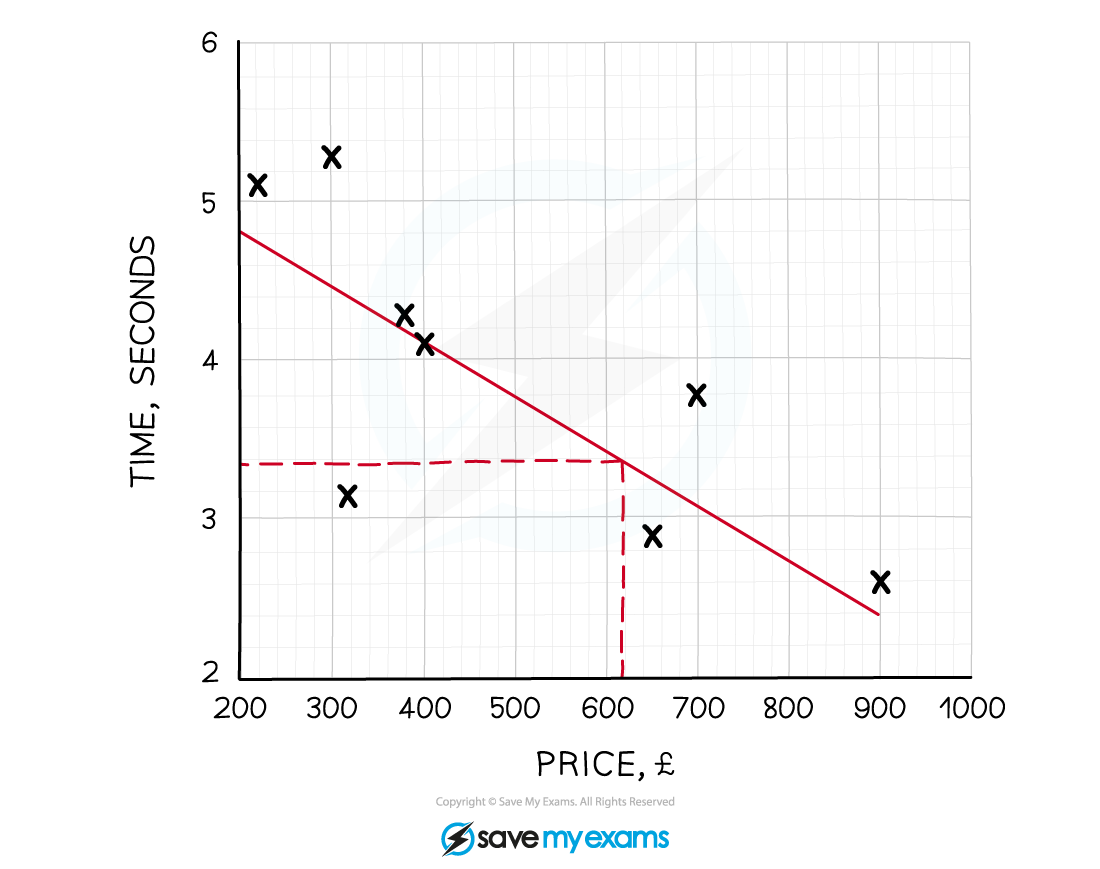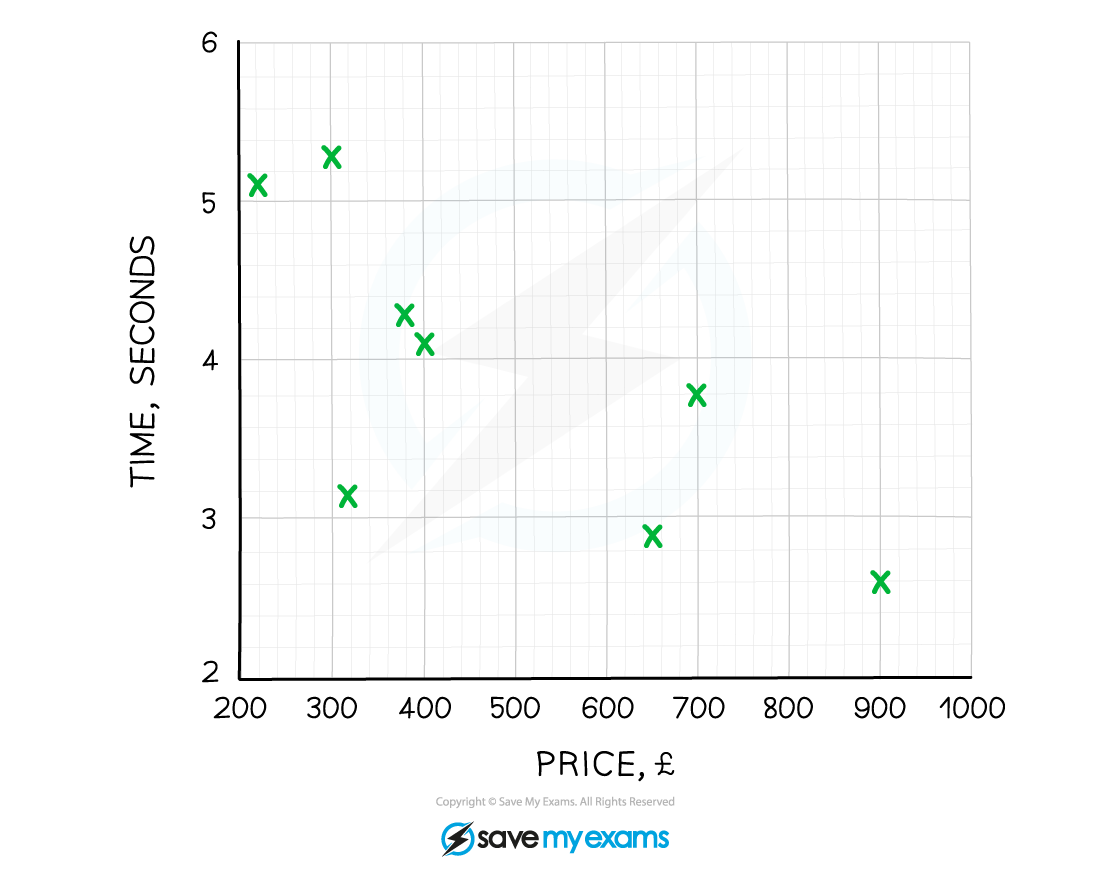Sophie wants to know if the price of a computer is related to the speed of the computer.
She tests 8 computers by running the same program on each, measuring how many seconds it takes to finish.
Sophie's results are shown in the table below.
| Price (£) |
320 |
300 |
400 |
650 |
250 |
380 |
900 |
700 |
| Time (secs) |
3.2 |
5.4 |
4.1 |
2.8 |
5.1 |
4.3 |
2.6 |
3.7 |
(a)
Draw a scatter diagram, showing the results on the axes below.
Plot each point carefully using crosses
(b)
Write down the type of correlation shown and use it to form a suitable conclusion.
The shape formed by the points goes from top left to bottom right (a negative gradient)
This is a negative correlation
As one quantity increases (price), the other decreases (time)
The graph shows a negative correlation
This means that the more a computer costs, the quicker it is at running the program
(c)
Use a line of best fit to estimate the price of a computer that completes the task in 3.4 seconds.
First draw a line of best fit, by eye
Then draw a horizontal line from 3.4 seconds to the line of best fit
Draw a vertical line down to read off the price

A computer that takes 3.4 seconds to run the program should cost around £620
A range of different answers will be accepted, depending on the line of best fit






